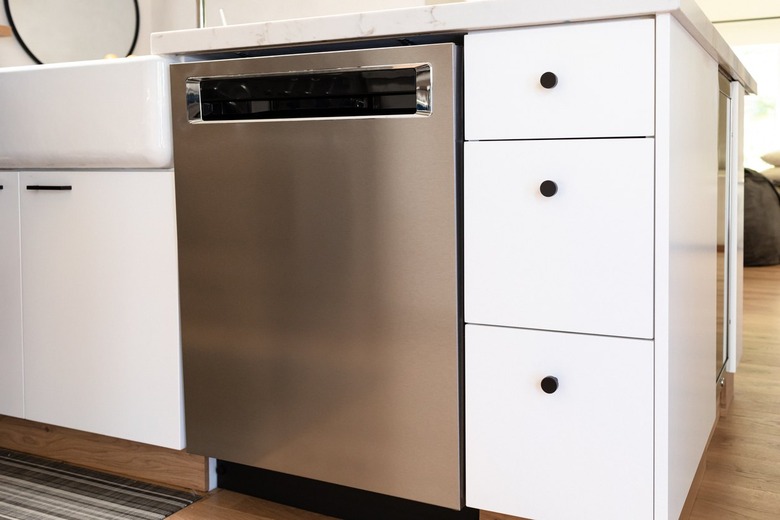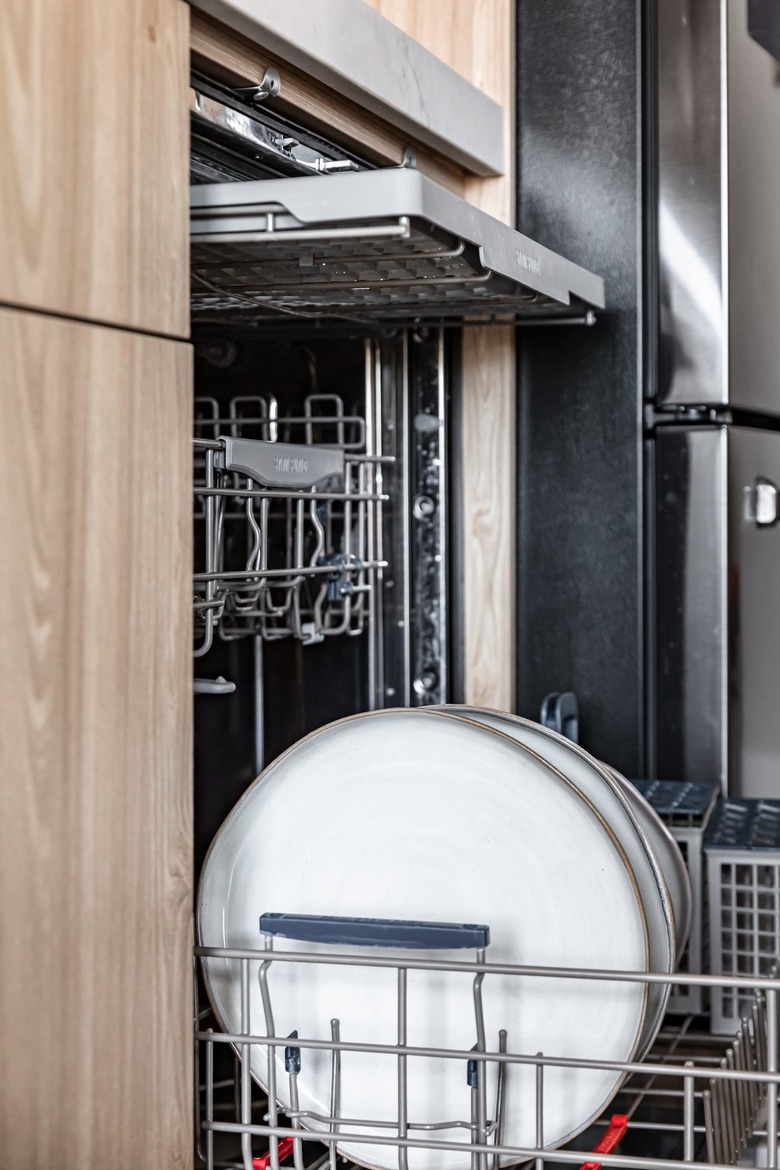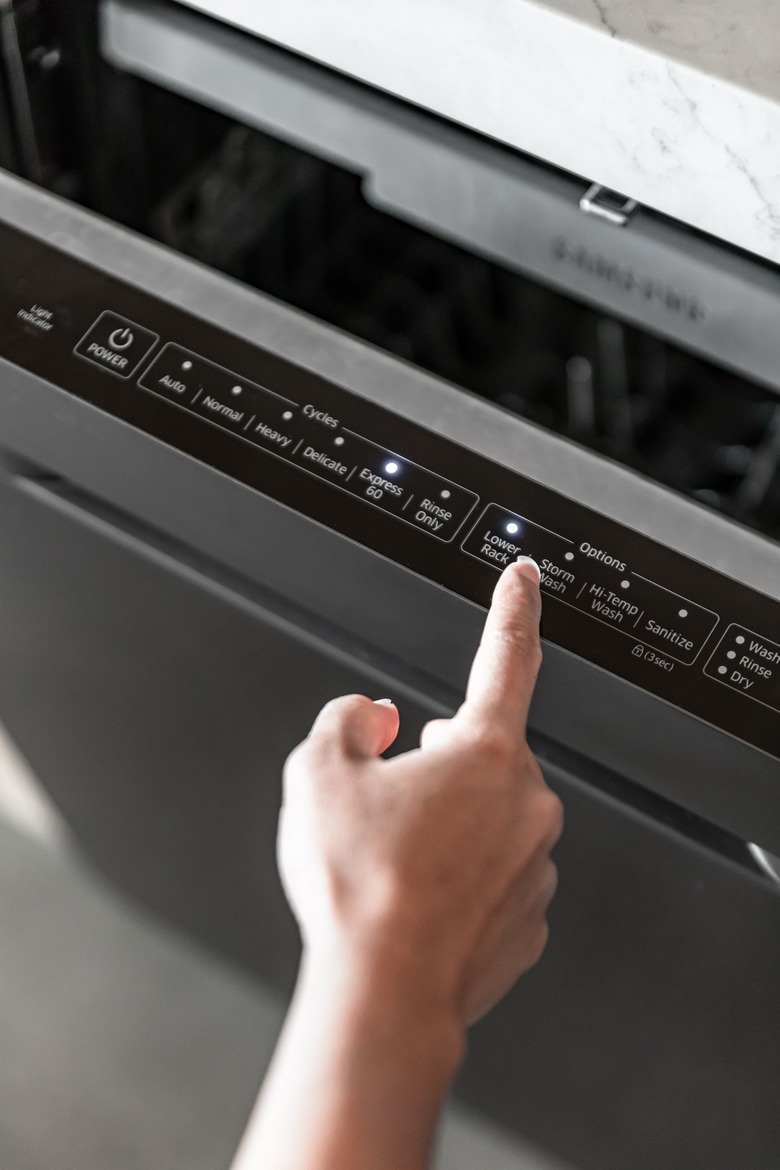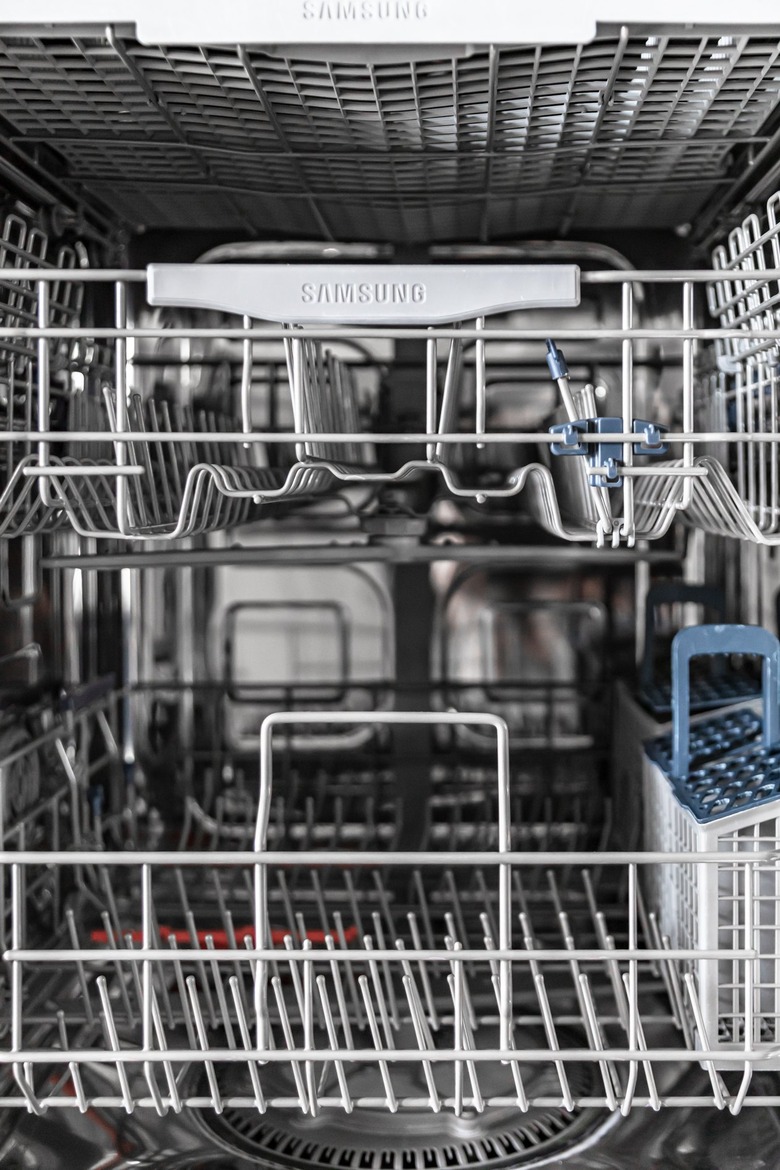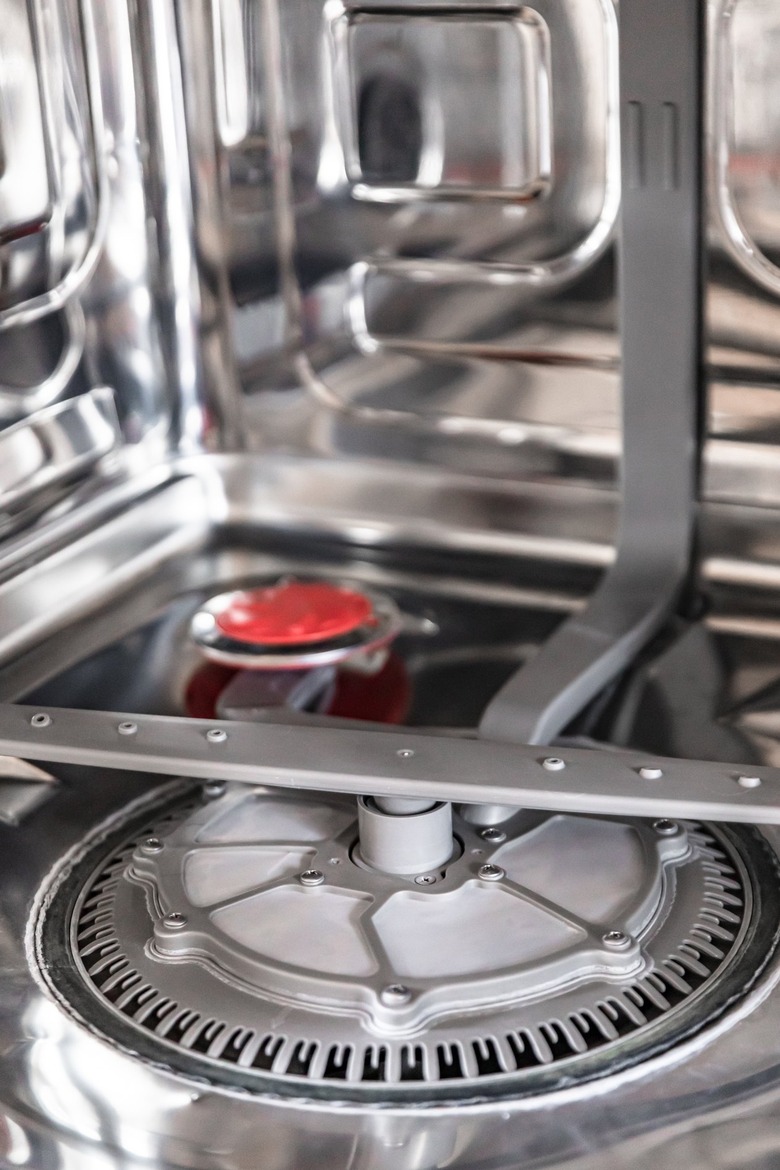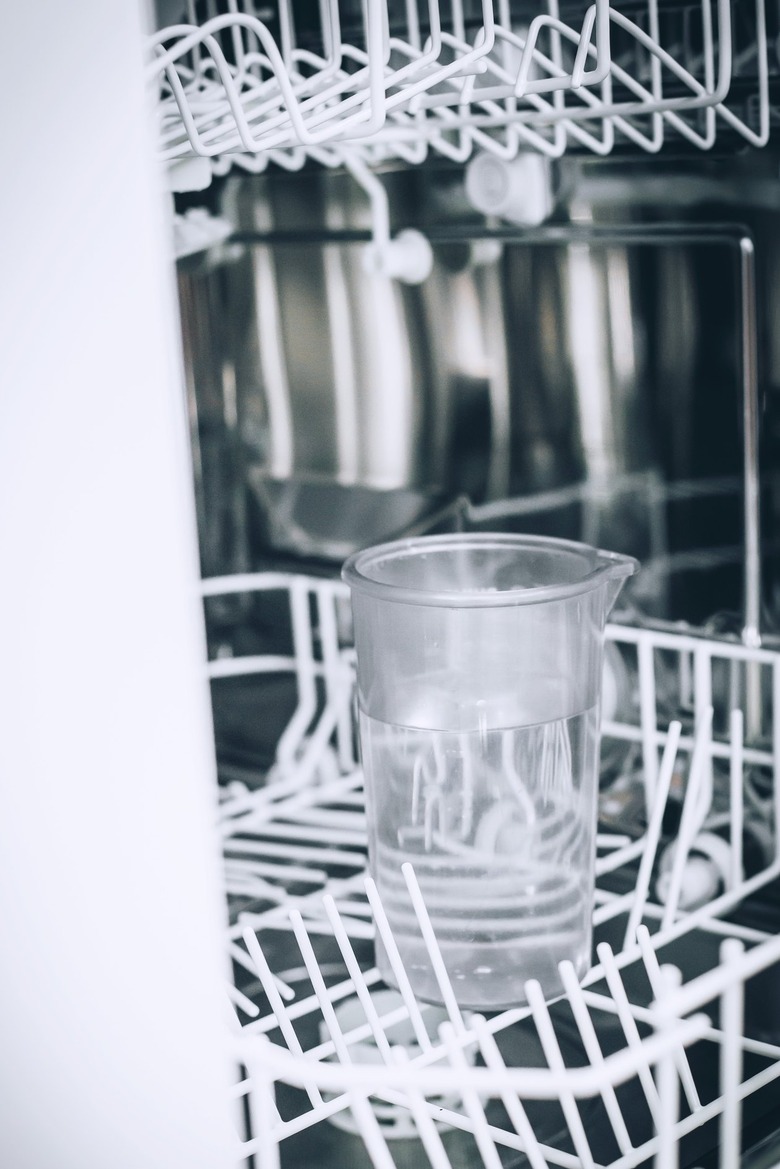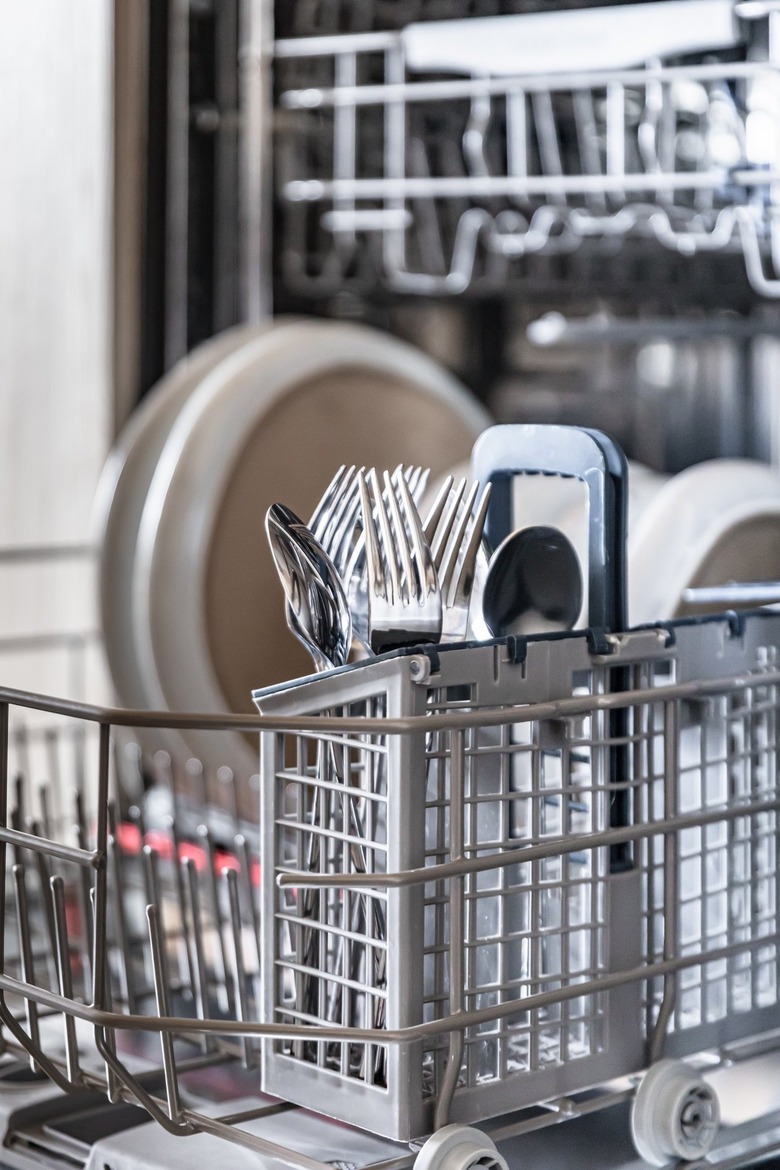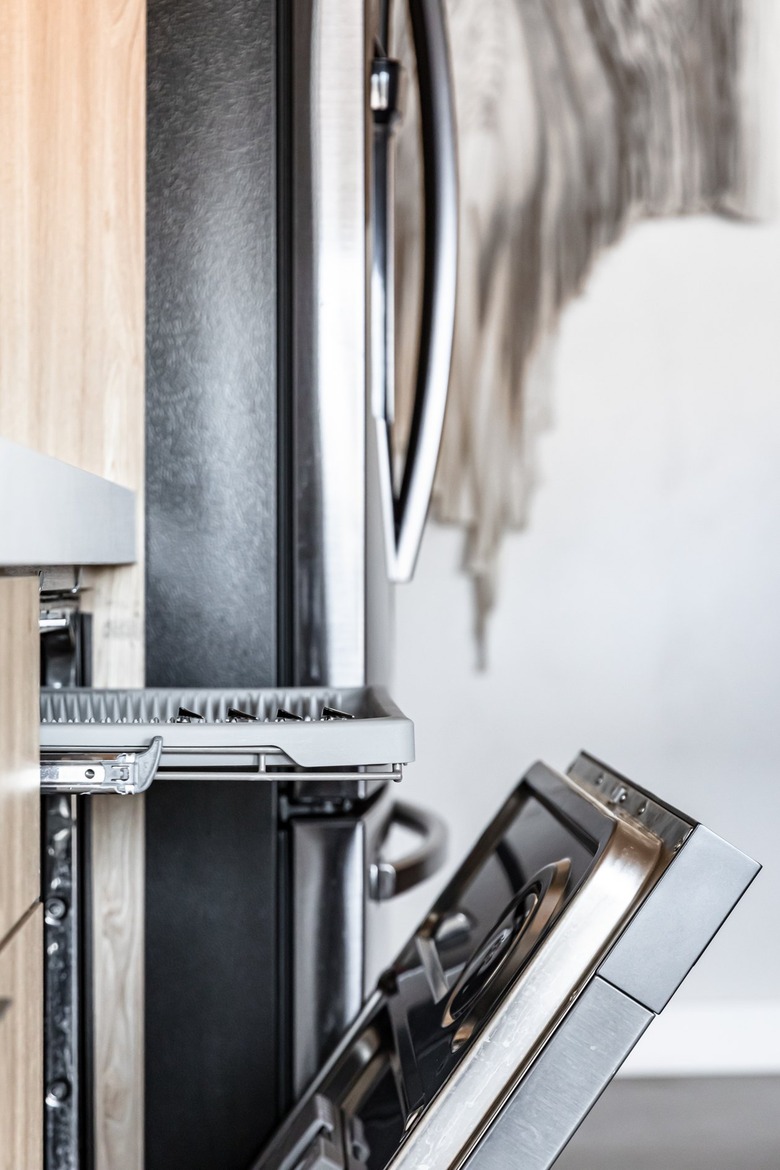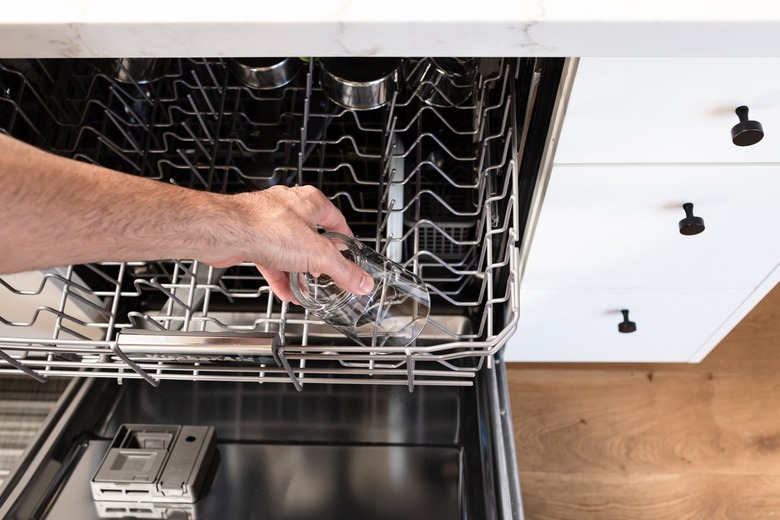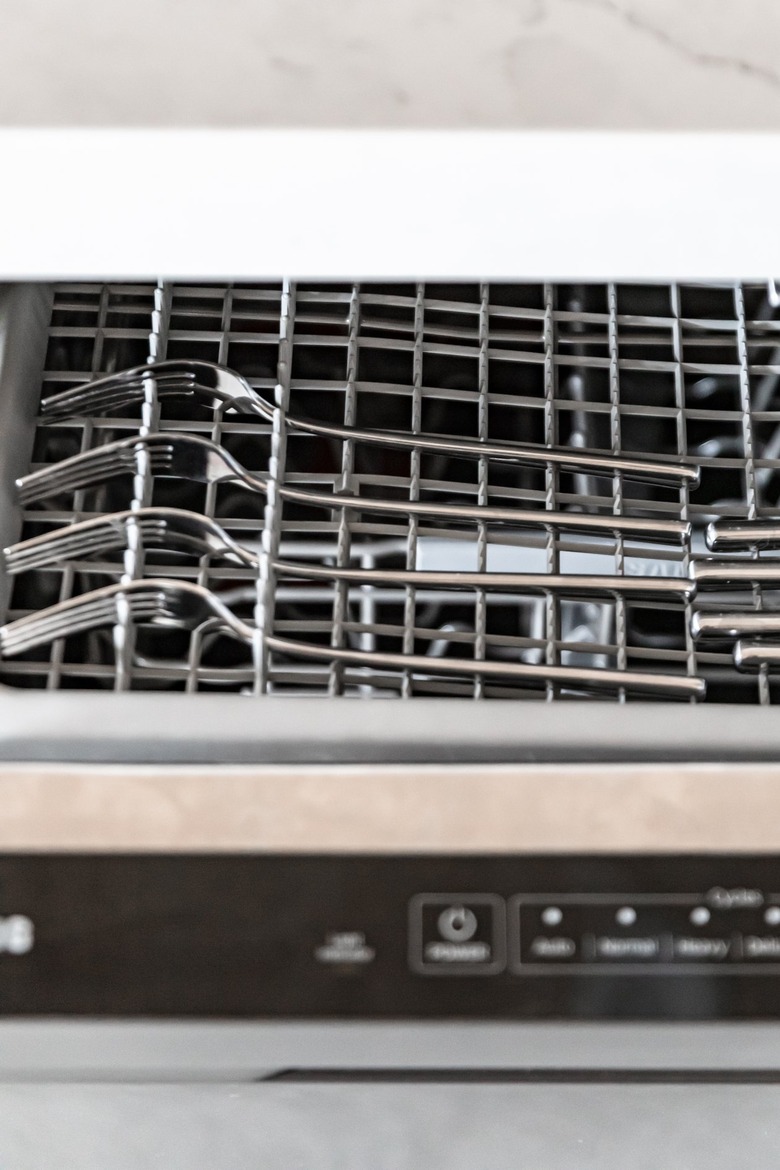19 Dishwasher Hacks Everyone Who Does Dishes Should Know
We may receive a commission on purchases made from links.
Most households have at least one self-appointed dishwasher master, the person who knows all the best dishwasher hacks, secrets, and strategies, from artful loading to precise, thoughtful cycle selection. The person who knows exactly where everything goes and sees space opportunities others miss. The person who is at one with this powerful cleaning machine and all of its capabilities.
If you are not yet a dishwasher master but desire to be one, this is your guide. Welcome to Dishwasher Top Gun.
1. Don’t overload your dishwasher.
1. Don't overload your dishwasher.
Dishwashers are really good at what they do, but they can't defy the laws of physics. They clean by spraying water upward onto whatever lies in its path. The water goes up and bounces off the dishes, and then it falls down and is recirculated repeatedly throughout the wash or rinse cycle. If the spray can't reach the items and surfaces, such as when the dishwasher is overloaded, they won't get clean. Likewise, expecting a dishwasher to clean the inside of a straw or items bundled inside a mesh bag is asking it to perform miracles. (And for the record, sponges and other absorbent items often don't get clean because they trap the dirty recirculated wash water, which may not come out during the rinse cycles.)
2. You can actually remove this tray.
2. You can actually remove this tray.
A flat cutlery tray occupies a shallow space above the top rack. It has tines for holding cutlery, but if you also have a regular cutlery basket, you might use the tray more for large, flat items, like container lids and long cooking tools. Most cutlery trays are easily removable for convenience when loading/unloading cutlery or to make extra room for the top rack.
3. There's a separate cycle just for bottles.
3. There's a separate cycle just for bottles.
Small bottle necks don't let in enough water to clean bottles effectively. Some dishwashers have little vertical jets (usually with clips for securing bottles) built into the upper rack, perfect for baby bottles, champagne glasses, and other slim bottle-neck items. Just be sure to hit the Bottle Jets button when setting the wash cycle.
4. You can wash just the top rack to save time and energy.
4. You can wash just the top rack to save time and energy.
If you can fit everything you need to wash in the upper rack, use the upper wash setting to save water, energy, and time. The lower setting is less useful since all glassware should go on the upper rack, and there are always glasses to wash.
5. Use the delayed start to save money.
5. Use the delayed start to save money.
If you live in an area with peak and off-peak utility pricing, you can use the delayed start function to have your dishwasher start automatically during off-peak hours.
6. Experiment with wash cycles to deep clean.
6. Experiment with wash cycles to deep clean.
Sanitize is the hottest wash and rinse setting and may add 90 minutes or more to a load. Use it when you're concerned about bacteria on certain items or for your monthly deep cleaning of the machine (without dishes). Heavy-duty (or pots and pans) is simply for full loads of heavily soiled dishes or for hard-to-clean pots and pans. It's hotter and longer than the normal wash cycle but less so than sanitize. Note that "sanitize" does not mean "sterile," as dishwashers can't sterilize.
7. Run tap water before turning on the dishwasher.
7. Run tap water before turning on the dishwasher.
The dishwasher's water supply hose taps into the hot-water line under your kitchen sink (in most cases). Kitchen sinks are often far from the water heater, so it takes awhile to get hot water from the faucet or into the dishwasher. Dishwashers need to be fed hot water (about 120 degrees Fahrenheit) for optimal performance. Most have the capability to heat the incoming water to 150 degrees, but not all machines may do this effectively. If your dishwasher is underperforming, try running the tap water until it's hot and then turn off the faucet and start the dishwasher.
8. Remove and clean your filter screen once a month.
8. Remove and clean your filter screen once a month.
This doesn't have to be complicated, but it's important to do on a regular basis; once a month is a good target. The most important thing to clean in your dishwasher is the filter assembly at the bottom of the dishwasher tub. If you haven't done this recently (or ever), prepare to be disgusted. The filter screen at the base of the tub catches bits of plastic, glass, paper labels, hair, and some food grime, but the filter basket underneath the screen is usually much worse. It becomes clogged with an oily, whitish sludge that comes off only with a good scrubbing in the sink with very hot water and dish soap. You may have to lift off the lower spray arm to access the filter screen and basket, but this can be done easily by hand (check your owner's manual).
9. Dry out your dishwasher to prevent gross smells.
9. Dry out your dishwasher to prevent gross smells.
Cleaning the filter assembly won't do much to prevent or freshen a smelly dishwasher. For that, it's best to do a high-heat (sanitize) wash with a bowlful of white vinegar set in the top rack (leave the rest of the dishwasher empty). Use the dry cycle and then leave the door open for a few hours to air out the interior completely. This easy cleaning process helps combat the funky, mildewy smell you start to notice when opening the dishwasher after each wash. This is also a good time to wipe away the brownish gunk that accumulates below the door and to wipe the door gasket.
Tip
If your kitchen sink emits horrendous odors during the dishwasher drain cycles, you can try replacing the dishwasher drain hose. This hose is corrugated and traps a lot of gunk, making it really stinky over time. Replacing the hose means routing the new one through the cabinets and connecting the hose underneath the dishwasher — a tedious, annoying job — but it's a cheap fix.
10. Never put these items in your dishwasher.
10. Never put these items in your dishwasher.
Most of the no-no items for a dishwasher are related to the high heat of the water and drying and the dishwasher detergent, which is a harsh, alkaline cleaner that can strips oils and other contaminants from dishes. The soap also gradually removes pigment and (along with water minerals) etches glass and promotes wear on many materials. In addition to keeping out heat-sensitive items, you should hand wash all of the following instead of putting them in the dishwasher:
- Good knives: Detergent dulls them; water damages wood handles.
- Fine/special glassware: Detergent and water etch them; movement can break them.
- Mugs or glassware with graphics: Detergent fades the graphics.
- Wooden utensils: Detergent dries and cracks them.
- Sponges: They don't get fully clean.
- Straws: Only the outside gets clean.
- Nonstick pans: Detergent is hard on the nonstick coating.
- Cast iron pans: Detergent and prolonged water exposure ruin the seasoning.
- Insulated mugs, water bottles, thermoses: High heat and detergent can break the vacuum seals.
- Aluminum items: Detergent corrodes the metal and turns it a dull, rough gray.
- The good stuff: The dishwasher is just too rough for fine materials like crystal, silver, vases, etc.
- Toothbrushes: Yes, this is actually recommended by some people — eww.
11. Change the direction of where your silverware points.
11. Change the direction of where your silverware points.
A dishwasher master is careful not to nest the silverware because spoons that spoon don't get clean. Prevent the nesting of like silverware by pointing some up and some down in the same basket compartment. And don't point all table knives down; they're made to cut butter, not fingers. (Point sharp knives down if they're cheap enough to wash.)
12. Load your dishes at an angle.
12. Load your dishes at an angle.
Tip or slope items as needed so the water drains off them and doesn't trap the dirty wash water. The same goes for lids lying flat in a cutlery tray; setting these at even a slight angle prevents pooling.
13. Avoid the quick wash as much as possible.
13. Avoid the quick wash as much as possible.
It makes sense that a quick-wash cycle, which might be as short as 30 minutes, uses less water and energy than a normal wash, which can easily run over two hours these days. But despite what you may have heard, it's the other way around. Those seemingly endless wash cycles are part of the energy efficiency of today's dishwashers. The secret of a quick wash is turbo-charging the cycles with more water and energy to get the same work done faster. A quick wash is handy when you need to save time, but don't use it to save resources.
14. Leave your dishwasher ajar when on a trip.
14. Leave your dishwasher ajar when on a trip.
So, you're frantically getting the house ready before a trip, and you don't want to come back to a sink full of dirty dishes, but if you wait to run the dishwasher, you'll miss your flight. Instead, run the rinse cycle to partially clean the dishes and then leave the dishwasher door ajar so the tub dries out while you're away. The dishes will be loaded and ready for a full wash when you get back.
15. Rinse your extra-dirty dishes beforehand.
15. Rinse your extra-dirty dishes beforehand.
This advice goes against the great majority of dishwasher tipsters out there, who advise you not to rinse at all because the dishwasher detergent needs food particles to do its job. The science behind this is murky, but fair enough; you don't have to rinse completely like in the old days. However, any food chunks left on the dishes are going to be circulating throughout your machine, and some will undoubtedly get stuck in the filter screen. It will also contribute to trapped gunk in the filter basket. So, perhaps the best advice is to scrape well and then rinse if needed to remove chunks; residue is okay. Also, if your dishes aren't getting clean, you can try rinsing to see if it helps.
16. Never put food in your dishwasher (yes, really).
16. Never put food in your dishwasher (yes, really).
This tip should be a joke, but there are plenty of "experts" who suggest washing vegetables (potatoes seem to be the standard) in a dishwasher (sans detergent) and even cooking food in it. Undercooked Maytag salmon? That's a pass, thank you. Remember that oily goo you found in your dishwasher's filter basket? Because they recirculate wash and rinse water, dishwashers are not designed to clean porous or organic materials that absorb water, like sponges or, uh, edible plants. Also, if you're so time-crunched that you can't spend 90 seconds washing potatoes, you don't really have time to cook either; maybe just grab a bag of chips instead.
17. Adjust your dishwasher's top rack for more space.
17. Adjust your dishwasher's top rack for more space.
If you've ever been frustrated with a lack of space in the dishwasher for larger items like bowls, pitchers, or pots, you can easily remedy this with just a quick adjustment. Depending on your model, you can move the top dishwasher rack up and down to make more space: All you need to do is pull the rack out, pinch the two plastic tabs on either side, and slide a few inches down. Never again will you have to play dishwasher Tetris to fit all of your dinner party dishes and utensils.
18. Use your dishwasher's top flap for wine glasses — and utensils!
18. Use your dishwasher's top flap for wine glasses — and utensils!
Another secret dishwasher feature you might not have known is the use for the dishwasher flap — or the piece on the top rack that has hinges and looks like a little shelf. Though its main purpose is to hold wine glass stems in place during a cycle, you can also use it to place longer utensils like knives or large cooking spoons or oddly shaped items that won't fit neatly into the silverware basket, like mixer attachments.
19. Polish silverware by adding aluminum foil to a cycle.
19. Polish silverware by adding aluminum foil to a cycle.
If your silverware is looking dingy or tarnished, a hot tip is to add a ball of aluminum foil before you run your cycle. Though it seems hard to believe, the chemicals from the dishwasher detergent and the foil interact and make your silverware look as good as new.
